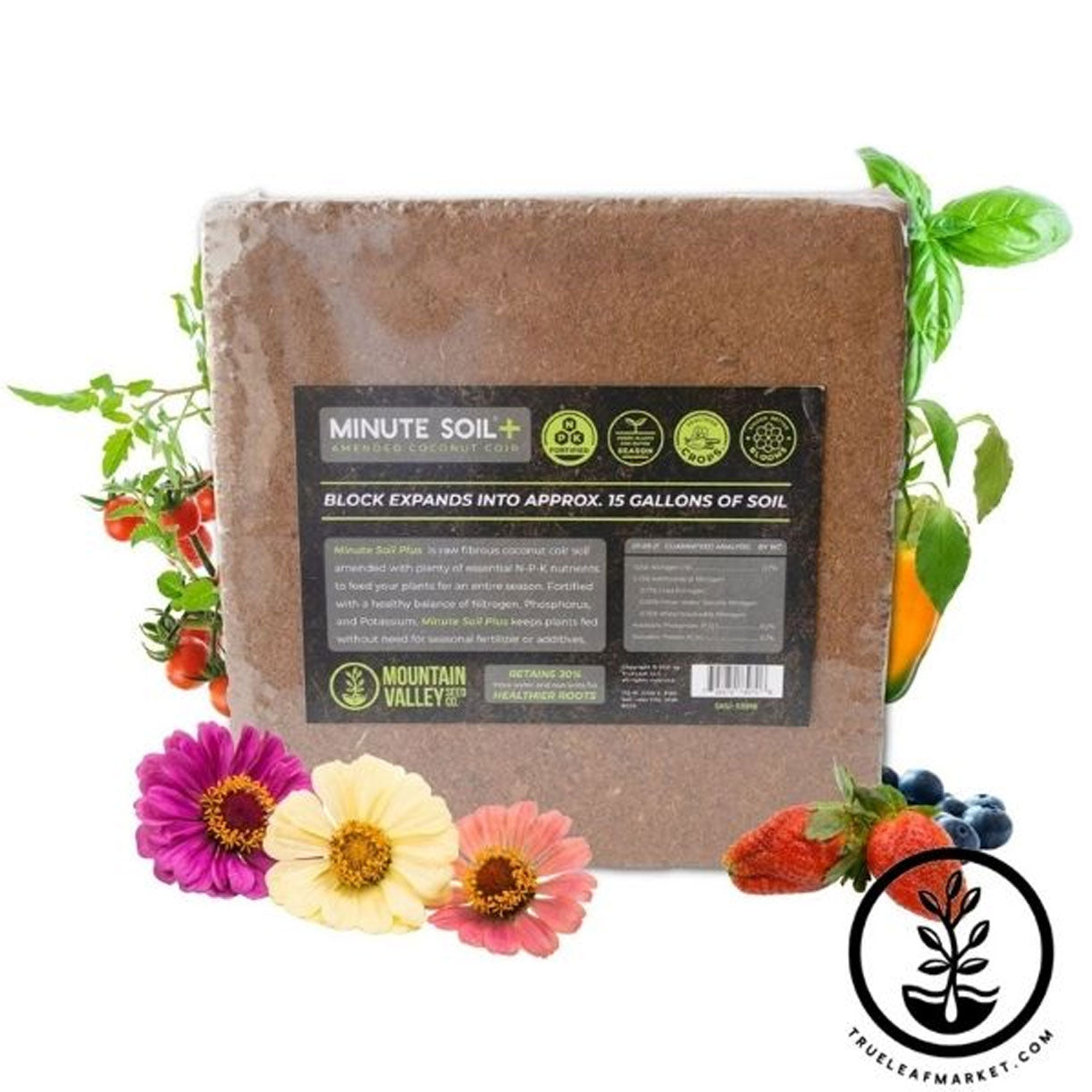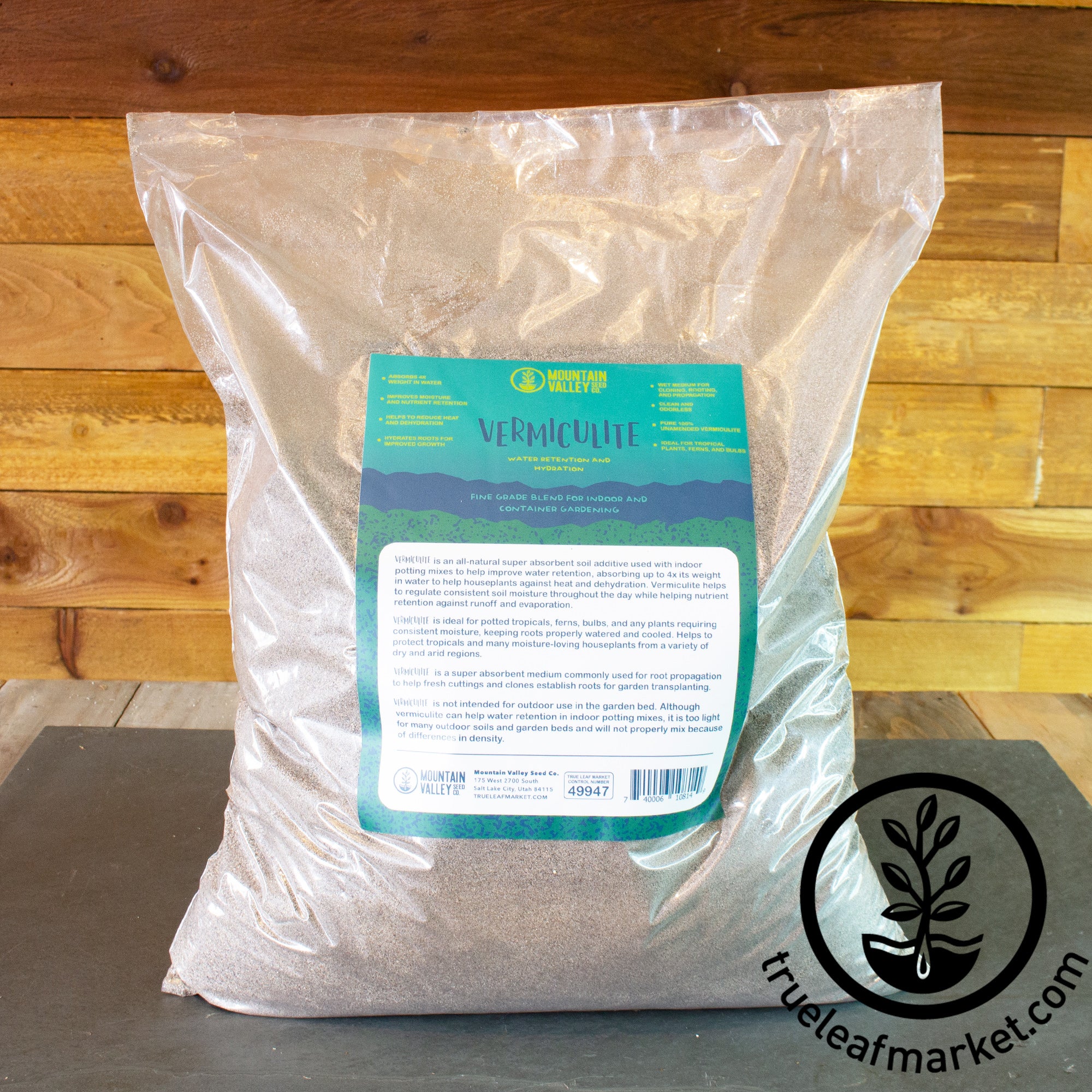
Ashleigh Smith

 |
Written By Lara Wadsworth |
You’re likely here because you suspect that your garden or potting soil is not holding onto water long enough for the plants to use it. Water retention is crucial for plant health and can be the difference between a thriving vegetable garden and a landscape that is only suitable for xeriscaping. While both can be beautiful, if you want more plant options, you have some tools to choose from! Soil amendments can do wonders for the health of a garden.
Why Soil Structure Affects Water Retention
The basic structure of all soil can be broken down into sand, silt, clay, and organic matter. Each material reacts differently to water and nutrients. The ratio of these materials together largely determines whether a garden is well-draining, soggy, or too dry. Learn more about soil structure, texture, and composition in our other soil-related blogs. Generally speaking, sandy soils low in organic matter will not retain water well. Other symptoms of not enough water retention include dry, wilted foliage, dry soil not long after heavy rains, and the presence of several types of mites (like spider mites, which prefer dry conditions).
You can know if your soil drains too quickly by completing a simple soil drainage test. Test your soil drainage by digging a hole 12-18 inches wide and deep and filling it with water. Let it drain overnight. Then, fill the hole with water again the next day and time how quickly it drains. You have good drainage if it drains in 10-30 minutes. If it takes longer than 30 minutes, amend the soil to improve drainage. If it takes less than 10 minutes, you will likely benefit from increasing water retention.
Best Soil Amendments to Retain Moisture
Do you know what the best soil amendment is? Say it with me… “ORGANIC MATTER!” Almost any soil-related problem can be resolved entirely or significantly improved by regular applications of high-quality organic matter. This includes items such as compost, manure, coconut coir, peat moss, worm castings, and leaf mold. All of these substances improve the soil in numerous ways and help to retain the correct amount of water without causing sogginess.
Beyond organic matter, you have some other good options as well. Vermiculite, for example, is a lightweight mineral that acts as a sponge to hold onto water and slowly release it over time, which is exactly what plants need. There are also water-absorbing crystals called Retain that I have been loving recently. Retain is composed of cross-linked polyacrylate, bentonite clay, lava rock, and silicates that together absorb up to 40 times their weight in water and slowly release it for use by your plants. It increases the water-holding capacity of soil by up to 60% while preventing sogginess and promoting healthy soil moisture levels.
While it sounds similar to vermiculite, I have found that it works even better because Retain takes its sweet time soaking up water and, correspondingly, is very slow to release it... providing more water for a longer period of time for the roots, rather than it evaporating or running off. While retain is most commonly used in potted plant settings, it can be worked into gardens and lawns as well!
How to Apply Soil Amendments
Once you have determined which amendments you wish to use, incorporating them is quite easy. The most straightforward technique is to mix your chosen amendments into the top 6-12 inches of soil using a shovel. This method works well for new garden beds and areas with minimal established plants. Topdressing is a suitable alternative for established lawns and garden beds.
Topdressing involves spreading the amendment evenly over the soil surface and letting it gradually integrate into the soil. Although this method is less intrusive and preserves existing garden features, it requires patience as it is the slowest process and doesn’t address issues deeper in the soil. Double-digging is essential for severely dry soils that require immediate improvement. This method involves digging a trench 1-3 feet deep, removing the soil, mixing the amendments into the trench, then replacing the soil and incorporating additional amendments as needed.
When to Add Soil Amendments
The optimal times for soil amending are fall and spring. Fall is particularly advantageous for adding organic matter, as it allows the material to break down over winter, enriching the soil in preparation for spring planting. Alternatively (or perhaps additionally), amending the soil in spring just before planting ensures the soil is in peak condition for the growing season. Throughout the growing season, periodic topdressing with well-rotted compost can provide a mid-season nutrient boost, keeping your plants healthy and thriving.
Tips for Long-Term Soil Moisture Management
Improving soil quality is a continuous process. Don’t be discouraged if multiple amendments are necessary over time. Regular additions of organic matter—potentially three to five times a year—are crucial for maintaining optimal soil texture and fertility. Approach this process step by step, and your garden will flourish as a result. In addition to soil amendments, mulch is a fantastic tool for water retention. Apply mulch over bare soil to maintain its structure, moisture levels, and nutrient content, especially in areas without ground covers. The primary goal of amending soil for any purpose is to achieve the optimal balance of all biotic and abiotic factors.
Plant choices also play a critical role in garden success. Whenever possible, select drought-tolerant native plants that have already been adapted to your region and soil type. While this isn't practical for a vegetable garden, landscapes, lawns, and yards can be greatly enhanced simply by choosing the correct plants to grow. Furthermore, cover crops can help to reduce evaporation, improve aeration, and reduce runoff and compaction, all factors that impact water retention.
Where to Learn More About Soil Health
When in doubt, local extension offices are always a great resource for information about soil, soil testing, native plant options, and more. Don’t be afraid to reach out to reputable sources such as universities for general help and inquiries.
 |
Lara Wadsworth, True Leaf Market Writer |
I am a native of Southwestern Michigan, where I currently reside. I love all things plants! After completing a Bachelor's Degree in Horticulture, I found a dream work-from-home job that allows me to share my passion. Now, I spend my days writing for TLM, playing with my dog, eating delicious food with my husband, and plotting my next landscape or gardening move. I believe everyone should get down and dirty in the soil now and then. Happy Gardening!
About the Author

I'm Ashleigh Smith, a native to Northern Utah. I first gained a love of gardening with my grandmother as I helped her each summer. I decided to make a career of it and have recently graduated with a Bachelor's degree in Horticulture from Brigham Young University - Idaho. My studies have focused on plant production while I also have experience in Nursery & Garden Center Operations.
Our Recommended Picks
Leave a comment
Your email address will not be published. Required fields are marked *
0 Comments
No Comments yet! Be the first to start a conversation
Further Reading

Harvesting the Incredible Health Benefits of Microgreens
Coming Soon! Check out this sneak peek. Microgreens are young edible seedlings that are harvested when they are just 1-3 inches tall. These quick-growing plants are emerging as an important food source with numerous health benefits. Their nutrient dens...

Ashleigh Smith
2025-09-301 min read0
Fall Bulb Planting Guide: When, What, and How to Plant for Spring Blooms
.cta-button { display: inline-block; background-color: #59AD46; /* green background */ color: #4096BC; /* blue text by default */ padding: 12px 28px; font-size: 18px; text-align: center; text-decoration: none; border-radius: 6px; font-weight: 600; tran...

Ashleigh Smith
2025-09-3012 min read0
Coco Coir and Vermiculite - The Leading Microgreen Growing Mediums
Written By Lara Wadsworth Microgreens are gaining popularity among growers and consumers. They are nutrient-dense, easy to produce, and can turn a profit quickly. The rising demand for efficient growing mediums continues to propel researchers to find b...

Ashleigh Smith
2025-09-306 min read0
Fall Gardening: Essential Perennial Care Tips Before Winter
Written By Lara Wadsworth Microgreens are gaining popularity among growers and consumers. They are nutrient-dense, easy to produce, and can turn a profit quickly. The rising demand for efficient growing mediums continues to propel researchers to find b...

Ashleigh Smith
2025-09-3013 min read0







